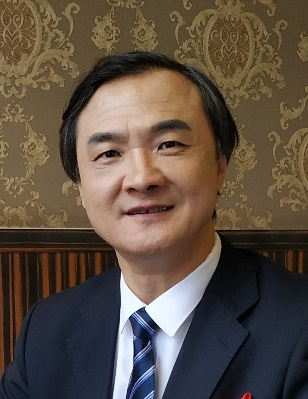Topic:Theoretical and Experimental Study on the Thermally-induced Ablation in Laser Cleaning
Time: 2:30pm, April 22
Venue: Building 2-5008, iHarbour
Speaker: Prof. You Wang (王浟), Southwest Institute of Technical Physics

Abstract
Since Dr. Bedair first proposed the concept of laser cleaning in 1969, after decades of continuous development, such technology has been developed from a simple laboratory technique to an important surface cleaning method that can be applied to many practical situations. At present, various models of laser cleaning equipment with different functions have begun to be sold in the international market. Although laser cleaning technology has been developed rapidly in recent years, its mechanism has not been perfectly explained due to the interaction between laser and different substances, including a series of complex physical and chemical reactions. So far, simulation models established to explore the mechanism of laser cleaning have mostly used a large number of theoretical simplifications and assumptions, resulting in significant differences between the calculation results of related simulation models and the actual cleaning state, and the related model theories often encounter awkward situations where they cannot be self consistent. These shortcomings limit the further development and widespread applications of laser cleaning technology to some extent. Therefore, it is necessary to conduct more in-depth systematic research on the theoretical prediction of laser cleaning mechanism.
The detailed working mechanism of laser cleaning, including the adsorption mechanism of the stain layer is first elaborated on the theoretical model of thin-layer substrate cleaning, and the physical explanation is then given on the thermally-induced ablation effect. At the theoretical level, the influence of the relevant output characteristic parameters of solid-state lasers on the laser cleaning effect is analyzed. Then, a simulation model for thermal ablation laser cleaning of a thin layer substrate system was proposed based on the latent heat consumption of stain layer ablation and the dynamic energy conservation of laser ablation light energy. The output characteristics of the solid-state laser were innovatively used as input parameters for the mathematical model, and a detailed comparative study was conducted on the laser cleaning process and cleaning effect from both theoretical simulation and experimental verification. This study has certain guiding significance for the further construction of a mathematical model and optimization of the design scheme of a laser cleaning system in the near future.
Resume
Prof. You Wang (王浟) was born in China, in 1966. He received the B.S. degree in laser technology from Zhejiang University, Hangzhou, China, in 1986, and the M.Sc. degree in optics from Chinese Academy of Science (registered in Hefei University of Technology), Hefei, China, in 1991, respectively. He received the Ph.D. degree in electronics/communication from Tohoku University, Sendai, Japan, in 1997. After then, he worked as an assistant professor of Tohoku University, a researcher of the major institutes of RICOH Co. Ltd, and a laser scientist of both the Center Laboratory of HPK Co. Ltd and Institute of Physical and Chemical Research of Japan (RIKEN) for more than 15 years. He is currently a national distinguished professor of China withSouthwest Institute of Technical Physics, China. He is also involved in various aspects of theory and practice of several types of lasers as well as their industrial applications. His current research interests include kinetic processes, molecular and atomic physics, solid-state lasers, semiconductor lasers, gas lasers, image processing, micro laser processing, special waveguides and optoelectronic technology. These works have been published in more than 260 refereed scientific papers (reviews) in the scientific journals and academic conferences. He has also applied more than 60 patents in China, Japan, the Unite States, and Europe Union. He is a member of several national special committees belong to the Optical Society of China (OSC), Chinese Society for Optical Engineering (CSOE), China Instrument and Control Society (CIS), the Optical Society of America (OSA), the Laser Society of Japan (LSJ), and Optics and Photonics Society of Singapore (OPSS). He is the chief editor of Laser Technology of China (in Chinese). He is also the members of the Editorial Board for the International Journal of Optics and Applications, Scientific & Academic Publishing (SAP).
